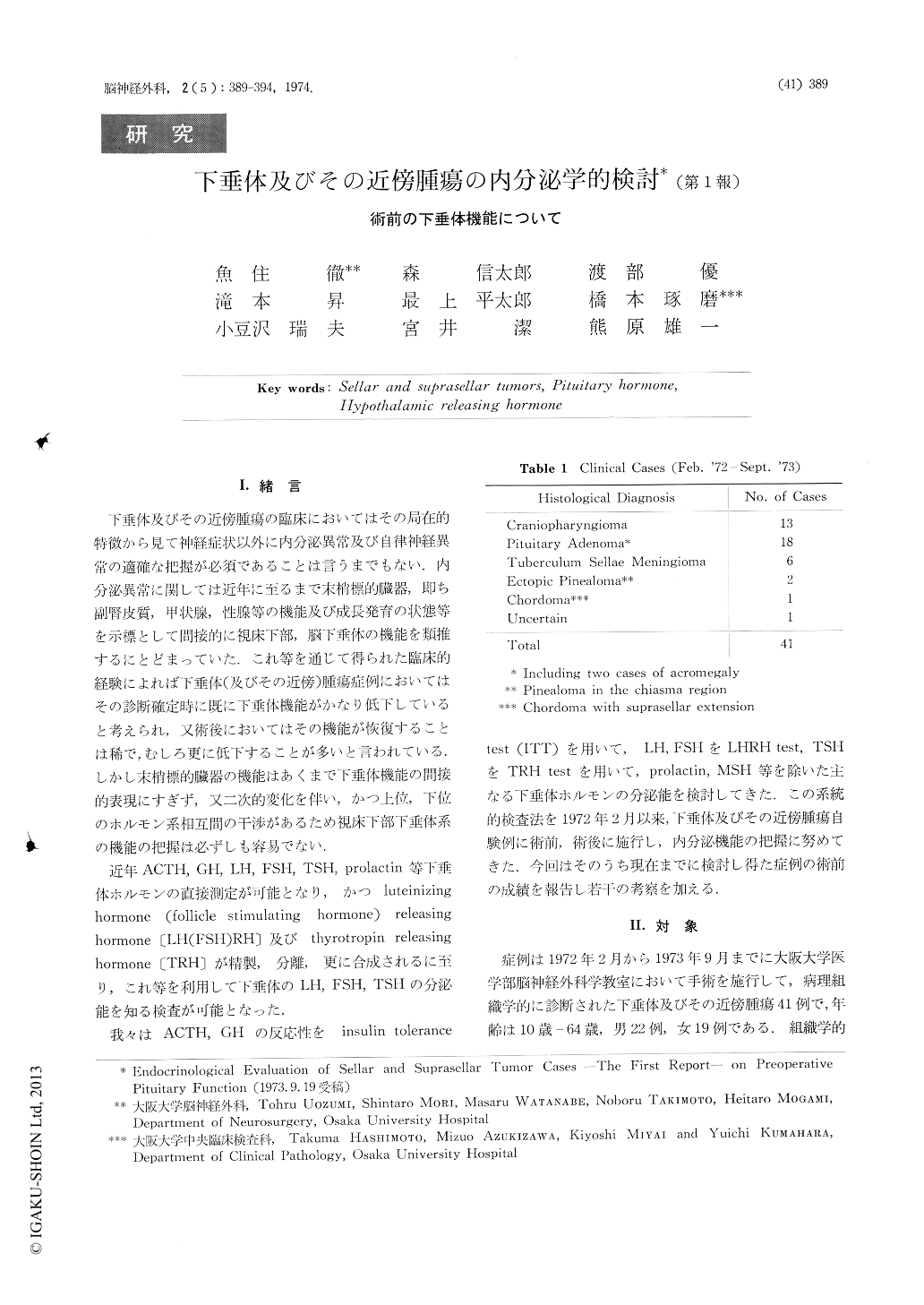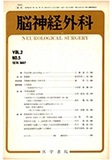Japanese
English
- 有料閲覧
- Abstract 文献概要
- 1ページ目 Look Inside
Ⅰ.緒言
下垂体及びその近傍腫瘍の臨床においてはその局在的特徴から見て神経症状以外に内分泌異常及び自律神経異常の適確な把握が必須であることは言うまでもない.内分泌異常に関しては近年に至るまで末梢標的臓器,即ち副腎皮質,甲状腺,性腺等の機能及び成長発育の状態等を示標として間接的に視床下部,脳下垂体の機能を類推するにとどまっていた.これ等を通じて得られた臨床的経験によれば下垂体(及びその近傍)腫瘍症例においてはその診断確定時に既に下垂体機能がかなり低下していると考えられ,又術後においてはその機能が恢復することは稀で,むしろ更に低下することが多いと言われている.しかし末梢標的臓器の機能はあくまで下垂体機能の間接的表現にすぎず,又二次的変化を伴い,かつ上位,下位のホルモン系相互間の干渉があるため視床下部下垂体系の機能の把握は必ずしも容易でない.
近年ACTH,GH,LH,FSH,TSH,prolactin等下垂体ホルモンの直接測定が可能となり,かつluteinizing hormone(follicle stimulating hormone)releasing hormone〔LH(FSH)RH〕及びthyrotropin releasing hormone〔TRH〕が精製,分離,更に合成されるに至り,これ等を利用して下垂体のLH,FSH,TSHの分泌能を知る検査が可能となった.
Forty-one cases of sellar and suprasellar tumors were examined endocrinologically before surgery. The tests of hypothalamo-pituitary function used in this study were as follows; insulin tolerance test (ITT) for for blood cortisol, growth hormone (GH) and adrenocorticotropic hormone (ACTH) response, thyrotropin releasing hormone loading test (TRH test) for blood thyroid stimulating hormone (TSH) response, luteinizing hormone/follicle stimulating hormone releasing hormone loading test (LHRH test) for blood LFI & FSH response, and Metyrapone test for urinary 17-hydroxycorticosteroid respone.

Copyright © 1974, Igaku-Shoin Ltd. All rights reserved.


